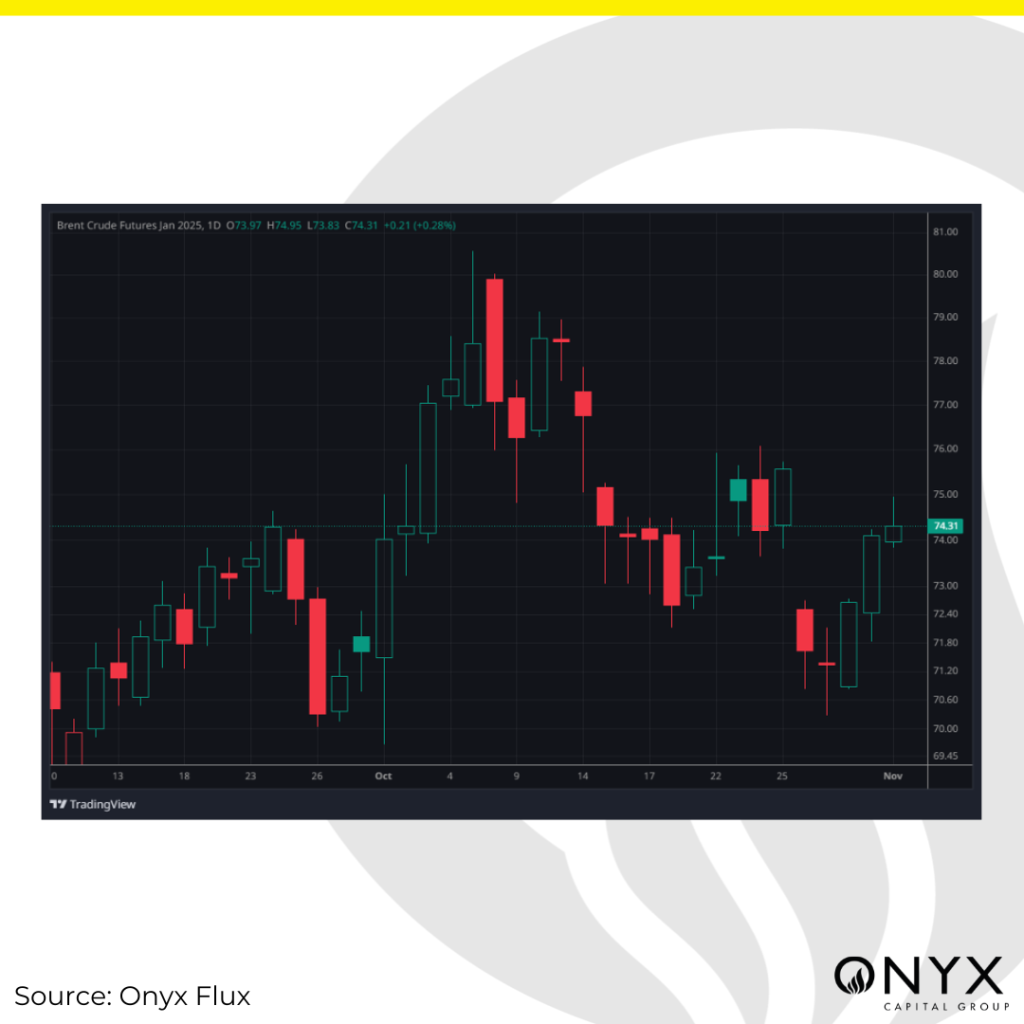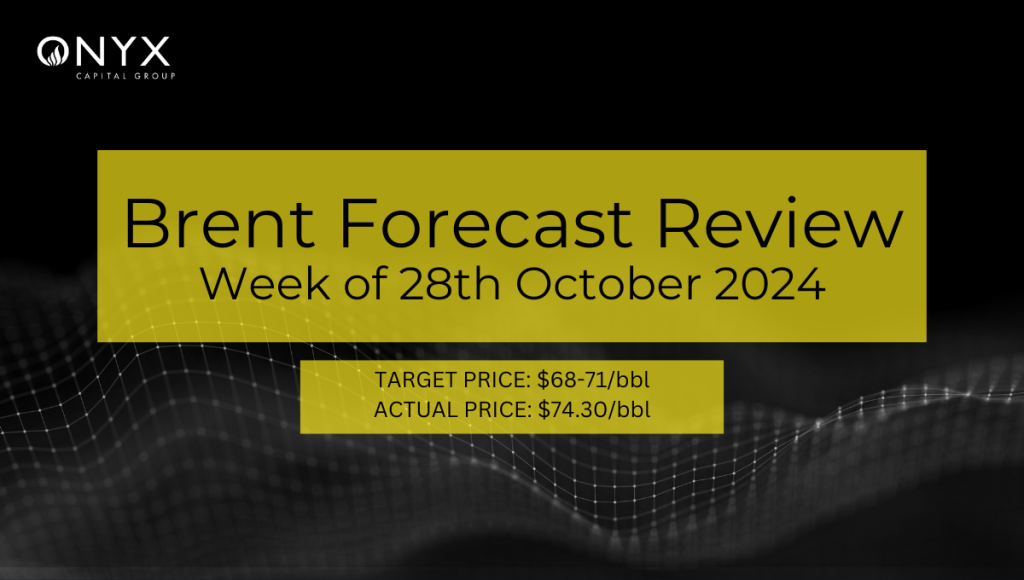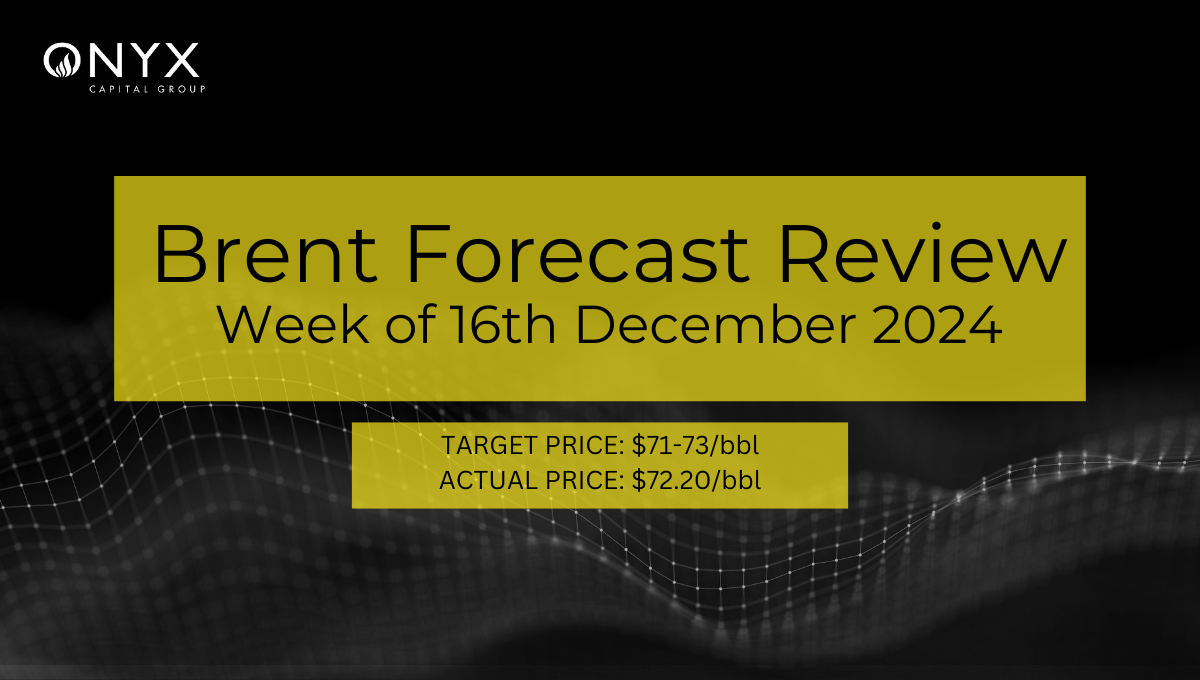The Risk Premium Rises (Again)
On Monday, we held a bearish view of the Jan’24 Brent futures contract and forecast it to end the week between $68-71/bbl. While the futures contract did weaken to an intraday low of $70.28/bbl on 29 Oct, it witnessed a surge of bullish interest ahead of the Dec’24 Brent futures expiry on Thursday and is currently sitting at $74.30/bbl at 10:30am GMT (time of writing). Retrospectively, we identify three key drivers of price action in Brent futures this week:
- Speculated Iranian retaliation on Israel dominating reported ceasefire plans in Lebanon
- Some green shoots out of China, but not yet out of the woods
- US data ahead of the Fed FOMC mitigating upside

Iran is allegedly planning to attack Israel from Iraqi territory in the next few days, possibly before the US presidential election on 05 Nov, as per Axios. A source also told CNN that Iran intends to carry out a “definitive and painful” response to the Israeli strikes last weekend. This news injected support to the geopolitical risk premium in oil prices after it had previously softened due to Israel exempting Iranian oil and nuclear infrastructure in its attack alongside conversations of a ceasefire of the war in Lebanon. However, news like this needs to be taken with a grain of salt. In a strange déjà vu from the last time the world was worried about the rising conflict between the two countries, Iranian Revolutionary Guard Corps commander Hosseini Salami stressed that Iran’s response would be “different from any scenario” Israel might expect.
Oil prices have also been impacted by the Chinese economy, which has printed worrisome data for several months. However, economic indicators released after the country’s stimulus measures highlight possible green shoots. The Caixin manufacturing PMI beat expectations and rose to 50.3 in October, reinforcing the positive news from China’s official manufacturing PMI, which ended five months of contraction. Notably, China’s residential property sales shot up in October m/m, with the value of new-home sales printing its first y/y increase in 2024. However, the Caixin sub-index of employment conditions fell to its lowest in 1.5 years, highlighting that China is not yet out of the woods and that the stimulus measures will take more time to support to economy.
Finally, the US Federal Reserve’s preferred inflation measure – the PCE – fell to 2.1% y/y in September, which aligns with expectations. However, inflation was up m/m, with core inflation up by 0.3% m/m – its most significant monthly increase since April. This may negate the probability of any outsized rate at next week’s FOMC meeting. The market will await today’s October Non-Farm Payrolls data and the US unemployment rate. As mentioned in Monday’s forecast, poor data in today’s NFP release will likely do little to the Fed’s plans for monetary easing. However, more robust data may reinforce the point above about the pace at which the Fed chooses to reduce its policy rate.


